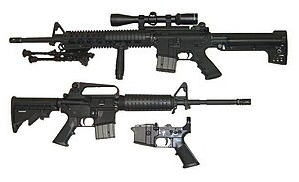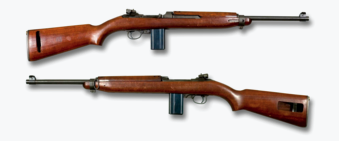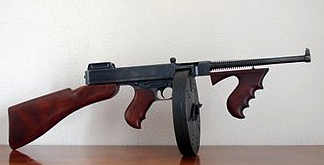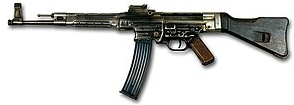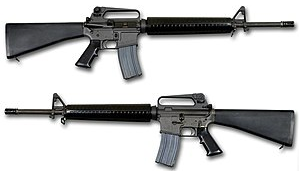And its history and cultural significance. Also: should civilians be allowed to own one?
Yes, this needs to be done, for once by someone who doesn’t feel strongly about them either way.
But first, let’s begin with the gun’s origin. As in, guns in general. The gun, having been invented after humanity’s shift from hunter/gatherers to farming and ranching, did not originally serve the primary purpose of food attainment. It was quickly adapted of course, but it’s imperative to understand that the design of guns has not historically considered hunting as its primary function. They are, above all, intended to kill people. They are weapons of war.
But many guns are also built on adapted platforms in order to boost their hunting and target-shooting efficacy at the cost of human-killing practicality, and I’m glad myself because these pursuits certainly interest me more than people-perforation. They became popular with rural dwellers because their environment benefited from them. Shooting crows and raccoons was necessary to protect crops. And hunting, while not necessary, added meat to the table. My father was a farmboy and taught me how to hunt. Gun ownership, for recreational non-people-killing uses had become cultural in our evolving society. Their use had changed in their civilian functions.
But now it’s shifting back away from practical civilian rural use and into military. Family farms gave over to conglomerates and our economy doesn’t support rural life nearly as much as urban. Simply put, the gun culture of practicality waned, and far fewer people now grow up familiarized with guns. Now, most peoples’ initiation into the gun world is through watching, rather than doing. And guns in media lean heavily to the people-killing variety.
So what does this mean for the AR-15? Well, now let’s look at modern military gun design.
If we begin the story with the standardized bullet cartridge design, then I can confidently say that the first modern guns were battle rifles, which are defined as single and semi-auto full rifle cartridge weapons. They have long barrels and large bullets. They hit hard and have a long range, but are unwieldy in close quarters.
So the carbine was developed. Arguments abound on their definition, but I would say that they’re short rifles designed around pistol cartridges, although they certainly have their share of custom-designed rounds. They sacrifice power and range for maneuverability.
To support these weapons, light machine guns were developed. They took the power and range of battle rifles and added automatic fire. Obviously they were not maneuverable, but that automatic fire was also then employed for…
Submachine guns. They sacrificed even more power and range than carbines in favor of maximum maneuverability and automatic fire, using pistol cartridges so they could be somewhat manageable.
Herein lied the gap. An intermediate weapon was needed that was somewhere around a carbine in terms of maneuverability, but with more powerful rounds and fully automatic capability. And so, in the later stages of WWII, the assault rifle was born. It uses an intermediate rifle cartridge that’s controllable under automatic fire, with the bonus of adding a select fire switch so the user can choose between firing speed and accuracy tradeoffs. It became the base for all modern military loadouts. And one of these designs became the M16, the US military’s standard light arm until very recently.
Ah, but the M16 isn’t the AR-15. True. The AR-15 became a civilian variant of a rejected military design to build a semi-automatic full rifle cartridge battle rifle/carbine hybrid, originally the AR-10, (losing out to the M14), but its design was later used as the base for the M16. The AR-10, which fired a full (short-stroke) rifle cartridge, was also later produced as the AR-15, which uses the smaller assault rifle cartridge. Thus began the US military’s switch from battle rifles to true assault rifles.
Furthermore, the M16 later underwent an adaptation into a reduced frame version, the M4, as urban warfare became the more common engagement environment, highly resembling the civilian AR-15.
So where are we at now?
As stated above, gun culture has shifted from recreational to paramilitary, and as a result people buying guns now gravitate to ones that resemble military guns in form and function. And the primary American armed forces gun in use for decades matches very closely the AR-15. And with its design patent expired, it’s also now cheap and widely available. Hence its popularity.
And now, with the AR-15’s origin explained along with the history of America’s shifting gun culture adopting it, the question remains: should civilians be allowed to own one?
Not so fast. Now we have to explain exactly what it is.
Politically-motivated pedants will be quick to point out what it isn’t: an assault rifle. They do this to discredit their opposition, who often refers to it as such. Because the “AR” in “AR-15” doesn’t stand for “assault rifle”, it stands for “Armalite rifle”, it’s original designer and manufacturer. Yes – it’s an easy mistake to make, and while I hate the smugness of those who make that correction, it is an important distinction. The original AR-10 design – a battle rifle – became both the M16 – an assault rifle – and the AR-15 – not an assault rifle by definition. Technically, it’s called the AR-15 carbine, but I think this is wrong too. I consider a true carbine to be a reduced frame battle rifle. No, the AR-15 is a reduced frame assault rifle, which needs a different definition (there is also the PDW, which I’ll just quickly define here as a submachine gun that shoots reduced-intermediate assault rifle cartridges), but even then there’s some inconsistencies with the definition because an assault rifle has automatic fire capability selection (I consider burst-fire automatic fire).
So we can’t define it on existing definitions. There – I said it. It’s a hybrid weapon: an assault rifle/carbine. It doesn’t fit into a nice box.
So should civilians be allowed to own one?
Promoters call it a “modular weapon platform” or other such weasel terms. Fine, I’ll agree with the platform being modular, but it’s this modularity that detracts from its credibility in the civilian gun culture. Sure you could eradicate varmints with it, but it’s overkill. And if you went hunting with it, you’d get your ass laughed out of the woods by old-timers. And its cartridge isn’t even legal for deer in many states, so I dunno what game you’d take with it.
The self-defense promoters lean on its people-killing effectiveness, which I can’t argue against. And that’s the double-edged sword right there. Defense…or offense via mass shootings?
And the Second Amendment-ers simply say it’s their American right. Which is dubious ground to stand on, even if a valid argument.
That question, I’m not going to answer. If the answer were easy, it would have already been answered. But hopefully this will provide some background on the damn thing’s origin and culture of ownership.
–Simon

